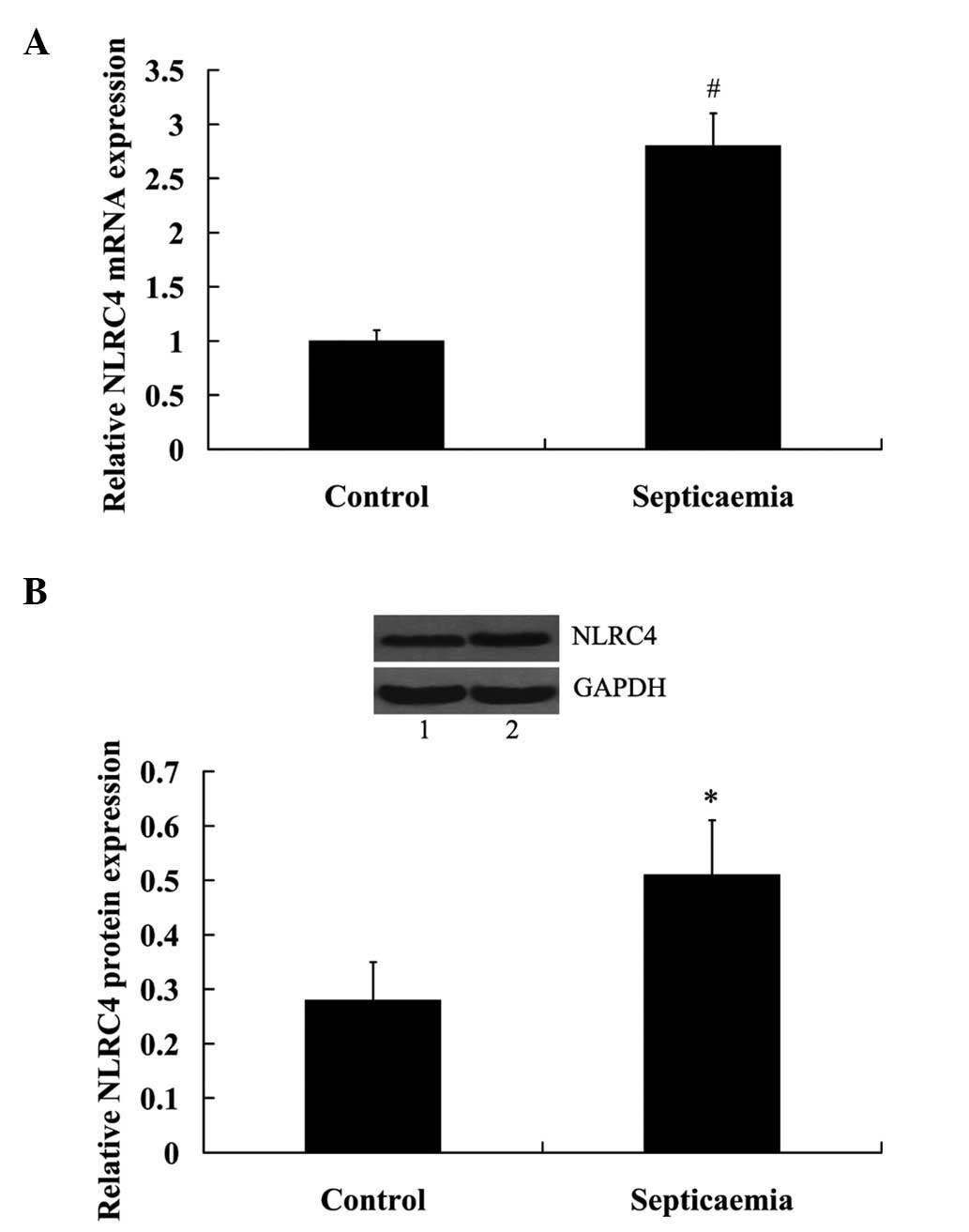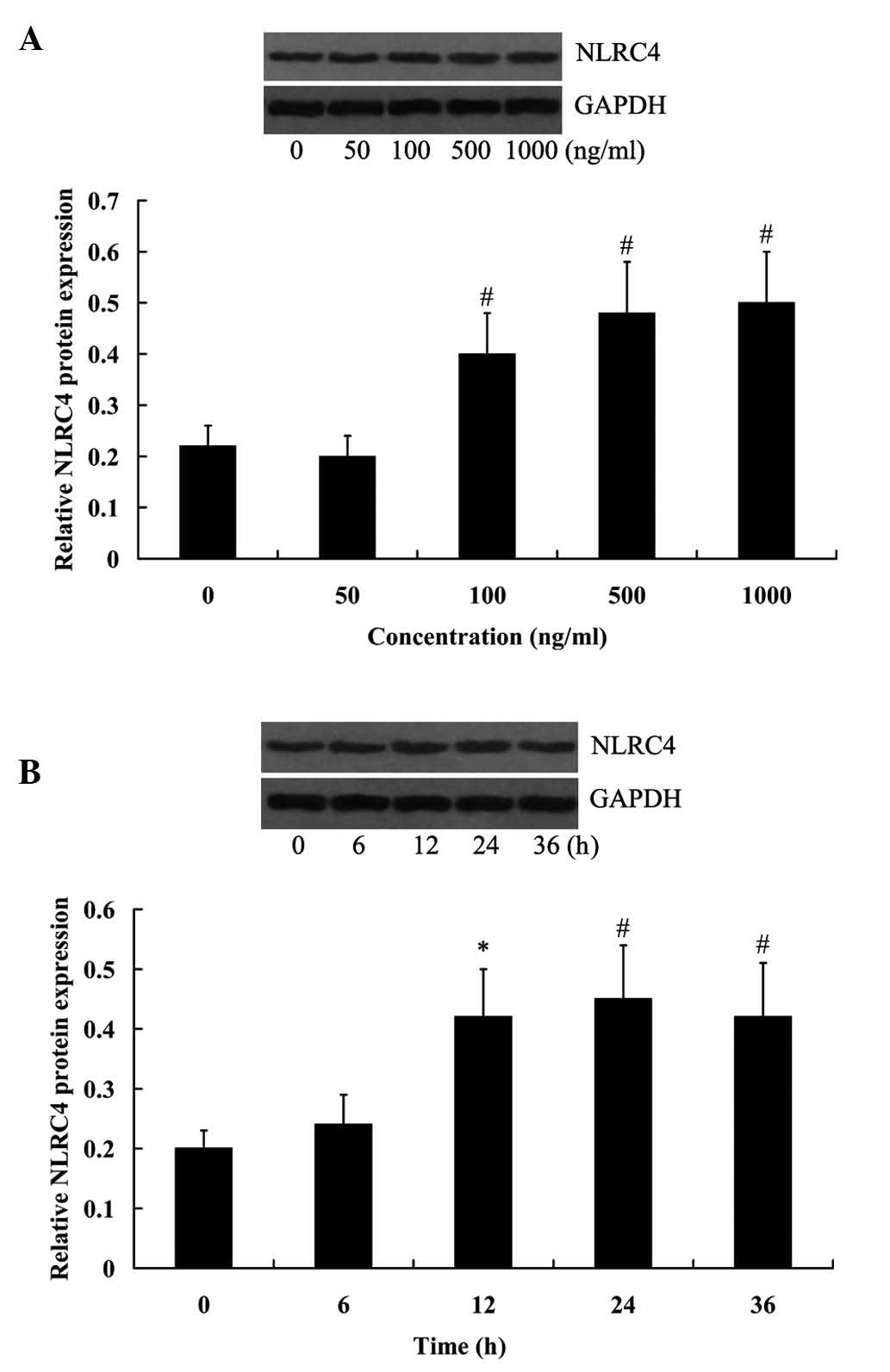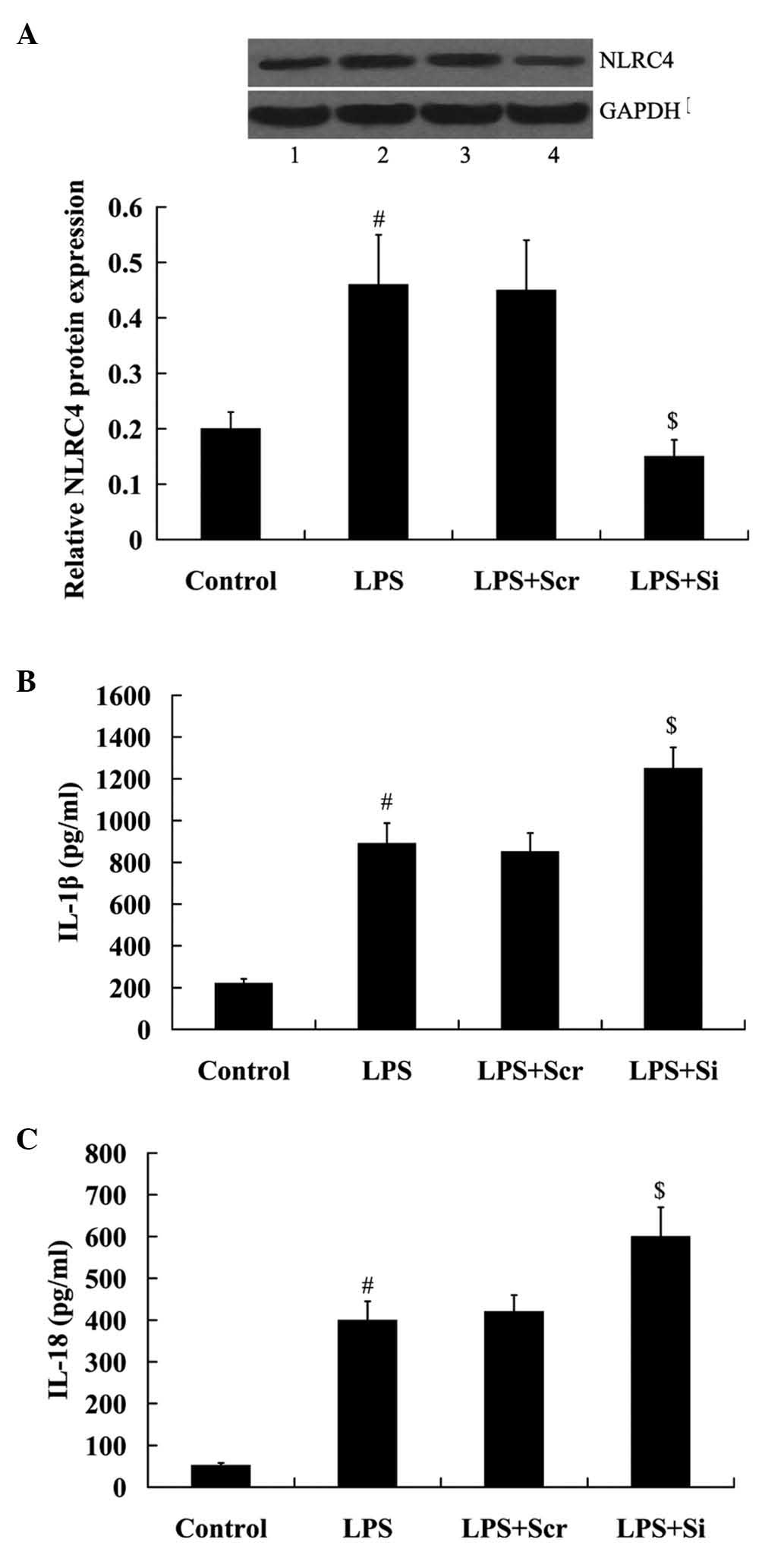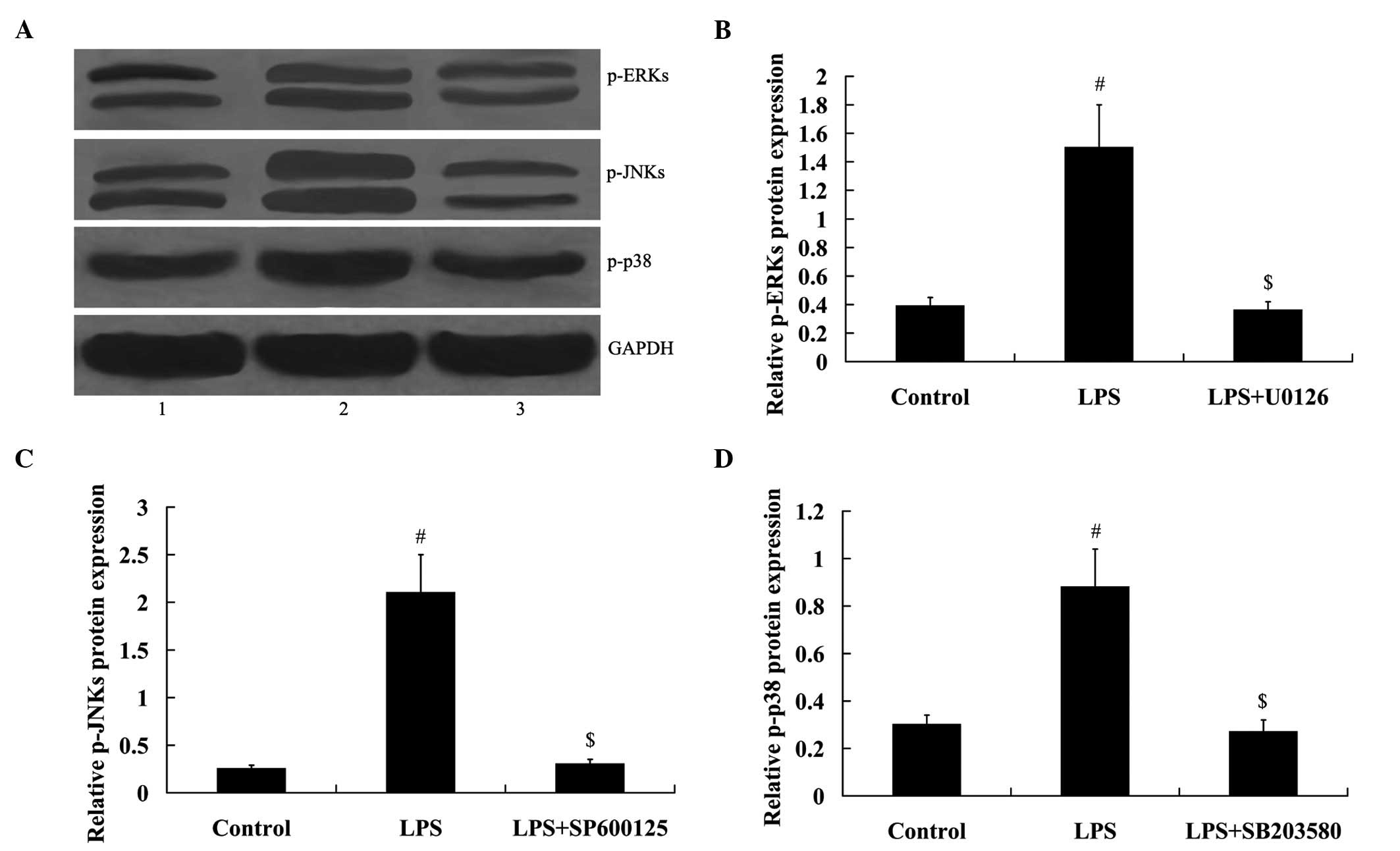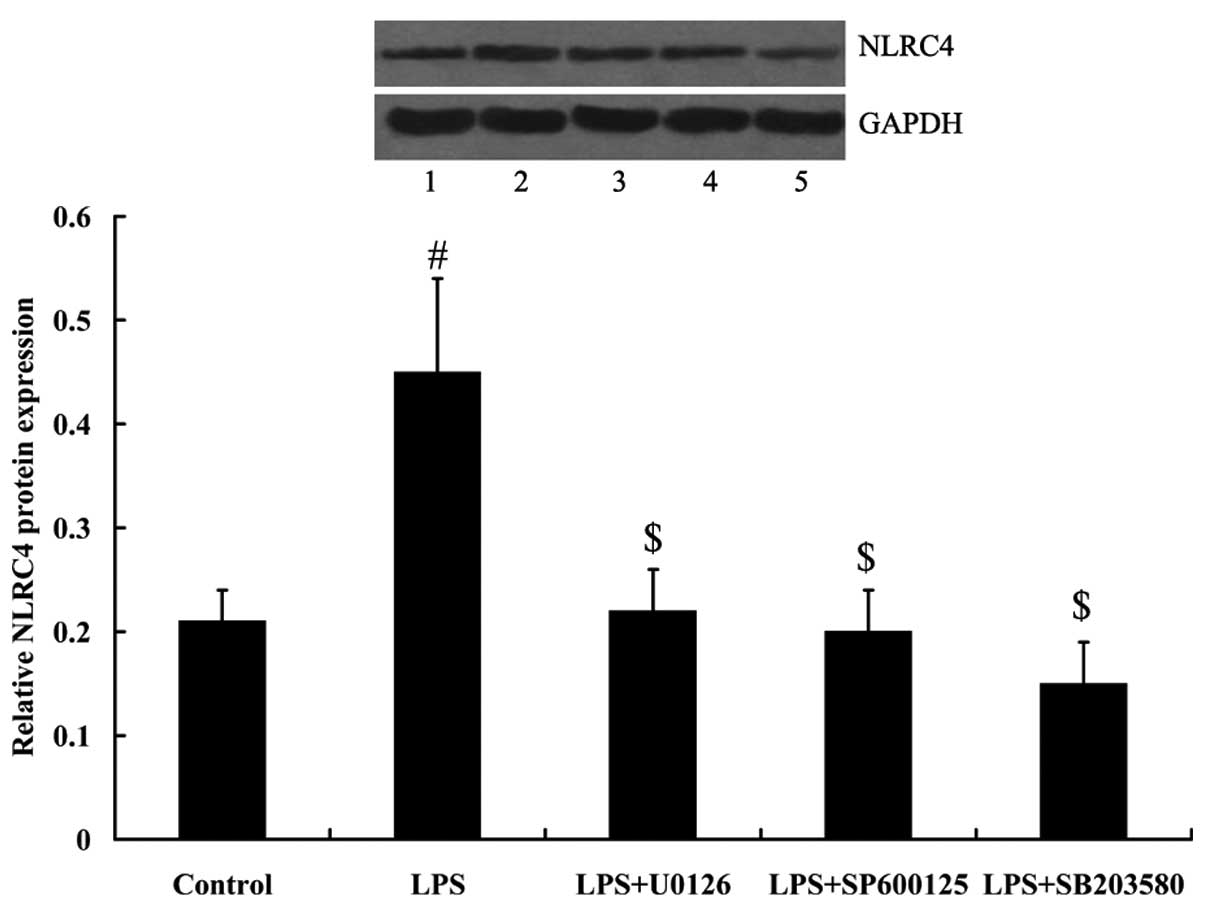|
1
|
Misallati A, el-Bargathy S and Shembesh N:
Blood-culture-proven neonatal septicaemia: A review of 36 cases.
East Mediterr Health J. 6:483–486. 2000.
|
|
2
|
Meremikwu MM, Nwachukwu CE, Asuquo AE,
Okebe JU and Utsalo SJ: Bacterial isolates from blood cultures of
children with suspected septicaemia in Calabar, Nigeria. BMC Infect
Dis. 5:1102005. View Article : Google Scholar : PubMed/NCBI
|
|
3
|
Geddes BJ, Wang L, Huang WJ, Lavellee M,
Manji GA, Brown M, Jurman M, Cao J, Morgenstern J, Merriam S, et
al: Human CARD12 is a novel CED4/Apaf-1 family member that induces
apoptosis. Biochem Biophys Res Commun. 284:77–82. 2001. View Article : Google Scholar : PubMed/NCBI
|
|
4
|
Franchi L, Amer A, Body-Malapel M,
Kanneganti TD, Ozören N, Jagirdar R, Inohara N, Vandenabeele P,
Bertin J, Coyle A, et al: Cytosolic flagellin requires Ipaf for
activation of caspase-1 and interleukin 1beta in
salmonella-infected macrophages. Nat Immunol. 7:576–582. 2006.
View Article : Google Scholar : PubMed/NCBI
|
|
5
|
Miao EA, Alpuche-Aranda CM, Dors M, Clark
AE, Bader MW, Miller SI and Aderem A: Cytoplasmic flagellin
activates caspase-1 and secretion of interleukin 1beta via Ipaf.
Nat Immunol. 7:569–575. 2006. View
Article : Google Scholar : PubMed/NCBI
|
|
6
|
Lightfield KL, Persson J, Trinidad NJ,
Brubaker SW, Kofoed EM, Sauer JD, Dunipace EA, Warren SE, Miao EA
and Vance RE: Differential requirements for NAIP5 in activation of
the NLRC4 inflammasome. Infect Immun. 79:1606–1614. 2011.
View Article : Google Scholar : PubMed/NCBI
|
|
7
|
Zhao Y, Yang J, Shi J, Gong YN, Lu Q, Xu
H, Liu L and Shao F: The NLRC4 inflammasome receptors for bacterial
flagellin and type III secretion apparatus. Nature. 477:596–600.
2011. View Article : Google Scholar : PubMed/NCBI
|
|
8
|
Kofoed EM and Vance RE: NAIPs: Building an
innate immune barrier against bacterial pathogens. NAIPs function
as sensors that initiate innate immunity by detection of bacterial
proteins in the host cell cytosol. Bioessays. 34:589–598. 2012.
View Article : Google Scholar : PubMed/NCBI
|
|
9
|
Poyet JL, Srinivasula SM, Tnani M, Razmara
M, Fernandes-Alnemri T and Alnemri ES: Identification of Ipaf, a
human caspase-1-activating protein related to Apaf-1. J Biol Chem.
276:28309–28313. 2001. View Article : Google Scholar : PubMed/NCBI
|
|
10
|
Miao EA, Ernst RK, Dors M, Mao DP and
Aderem A: Pseudomonas aeruginosa activates caspase 1 through Ipaf.
Proc Natl Acad Sci USA. 105:2562–2567. 2008. View Article : Google Scholar : PubMed/NCBI
|
|
11
|
Miao EA, Mao DP, Yudkovsky N, Bonneau R,
Lorang CG, Warren SE, Leaf IA and Aderem A: Innate immune detection
of the type III secretion apparatus through the NLRC4 inflammasome.
Proc Natl Acad Sci USA. 107:3076–3080. 2010. View Article : Google Scholar : PubMed/NCBI
|
|
12
|
Brodsky IE, Palm NW, Sadanand S, Ryndak
MB, Sutterwala FS, Flavell RA, Bliska JB and Medzhitov R: A
yersinia effector protein promotes virulence by preventing
inflammasome recognition of the type III secretion system. Cell
Host Microbe. 7:376–387. 2010. View Article : Google Scholar : PubMed/NCBI
|
|
13
|
Warren SE, Mao DP, Rodriguez AE, Miao EA
and Aderem A: Multiple nod-like receptors activate caspase 1 during
listeria monocytogenes infection. J Immunol. 180:7558–7564. 2008.
View Article : Google Scholar : PubMed/NCBI
|
|
14
|
Livak KJ and Schmittgen TD: Analysis of
relative gene expression data using real time quantitative PCR and
the 2(-delta delta C(T)) method. Methods. 25:402–408. 2001.
View Article : Google Scholar
|
|
15
|
Luna CM, Rodriguez-Noriega E, Bavestrello
L and Guzmán-Blanco M: Gram-negative infections in adult intensive
care units of latin america and the Caribbean. Crit Care Res Pract.
2014:4804632014.PubMed/NCBI
|
|
16
|
Moran AP, Prendergast MM and Appelmelk BJ:
Molecular mimicry of host structures by bacterial
lipopolysaccharides and its contribution to disease. FEMS Immunol
Med Microbiol. 16:105–115. 1996. View Article : Google Scholar : PubMed/NCBI
|
|
17
|
Takeuchi O, Hemmi H and Akira S:
Interferon response induced by toll-like receptor signaling. J
Endotoxin Res. 10:252–256. 2004. View Article : Google Scholar : PubMed/NCBI
|
|
18
|
Dennis VA, Jefferson A, Singh SR, Ganapamo
F and Philipp MT: Interleukin-10 anti-inflammatory response to
borrelia burgdorferi, the agent of lyme disease: A possible role
for suppressors of cytokine signaling 1 and 3. Infect Immun.
74:5780–5789. 2006. View Article : Google Scholar : PubMed/NCBI
|
|
19
|
Zediak VP and Hunter CA: IL-10 fails to
inhibit the production of IL-18 in response to inflammatory
stimuli. Cytokine. 21:84–90. 2003. View Article : Google Scholar : PubMed/NCBI
|
|
20
|
Kasama T, Miwa Y, Isozaki T, Odai T,
Adachi M and Kunkel SL: Neutrophil-derived cytokines: Potential
therapeutic targets in inflammation. Curr Drug Targets Inflamm
Allergy. 4:273–279. 2005. View Article : Google Scholar : PubMed/NCBI
|
|
21
|
Brodsky IE and Monack D: NLR-mediated
control of inflammasome assembly in the host response against
bacterial pathogens. Semin Immunol. 21:199–207. 2009. View Article : Google Scholar : PubMed/NCBI
|
|
22
|
Ceballos-Olvera I, Sahoo M, Miller MA, Del
Barrio L and Re F: Inflammasome-dependent pyroptosis and IL-18
protect against burkholderia pseudomallei lung infection while
IL-1β is deleterious. PLoS Pathog. 7:e10024522011. View Article : Google Scholar
|
|
23
|
DeSantis DA, Ko CW, Liu Y, Liu X, Hise AG,
Nunez G and Croniger CM: Alcohol-induced liver injury is modulated
by Nlrp3 and Nlrc4 inflammasomes in mice. Mediators Inflamm.
2013:7513742013. View Article : Google Scholar
|
|
24
|
Plotnikov A, Zehorai E, Procaccia S and
Seger R: The MAPK cascades: Signaling components, nuclear roles and
mechanisms of nuclear translocation. Biochim Biophys Acta.
1813:1619–1633. 2011. View Article : Google Scholar
|
|
25
|
Runchel C, Matsuzawa A and Ichijo H:
Mitogen-activated protein kinases in mammalian oxidative stress
responses. Antioxid Redox Signal. 15:205–218. 2011. View Article : Google Scholar
|
|
26
|
Keshet Y and Seger R: The MAP kinase
signaling cascades: A system of hundreds of components regulates a
diverse array of physiological functions. Methods Mol Biol.
661:3–38. 2010. View Article : Google Scholar : PubMed/NCBI
|
|
27
|
Arthur JS and Ley SC: Mitogen-activated
protein kinases in innate immunity. Nat Rev Immunol. 13:679–692.
2013. View
Article : Google Scholar : PubMed/NCBI
|
|
28
|
Yang Y, Kim SC, Yu T, Yi YS, Rhee MH, Sung
GH, Yoo BC and Cho JY: Functional roles of p38 mitogen-activated
protein kinase in macrophage-mediated inflammatory responses.
Mediators Inflamm. 2014:3523712014. View Article : Google Scholar : PubMed/NCBI
|
|
29
|
Tiedje C, Holtmann H and Gaestel M: The
role of mammalian MAPK signaling in regulation of cytokine mRNA
stability and translation. J Interferon Cytokine Res. 34:220–232.
2014. View Article : Google Scholar : PubMed/NCBI
|
|
30
|
Guha M and Mackman N: LPS induction of
gene expression in human monocytes. Cell Signal. 13:85–94. 2001.
View Article : Google Scholar : PubMed/NCBI
|















